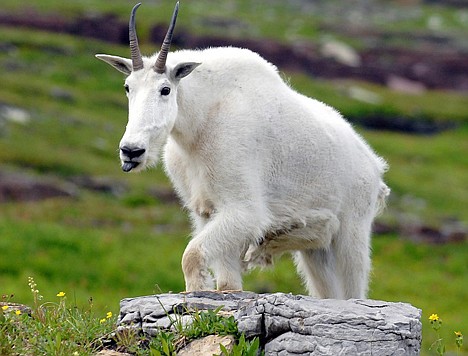Bringing back the goats
WHITEFISH, Mont. - They mostly blinked out on the Whitefish Range sometime in the 1960s, but now there is a proposal to bring mountain goats back.
Montana Fish, Wildlife and Parks proposes transplanting about 15 goats from the Crazy Mountains to Stryker Peak as early as January 2011.
During the 1950s, it was estimated there were about 50 native goats roaming the range, but the population mostly faded during the following decade. The last sightings of goats, thought to have dispersed from Canada or Glacier National Park, was in the early 1990s.
Tim Thier, the Eureka-based state biologist who developed the project, said hunting played a major role in the herd's demise.
There was a school of thought in wildlife management in the 1950s and 1960s that mountain goats were considered a species least affected by hunting because they inhabit such remote terrain, Thier said.
"But since then we've learned that they are one of the most affected species," he added. "When harvesting mountain goats you have to be very conservative with permits."
A draft environmental assessment, available for public comment through Nov. 3, calls for using a helicopter net gun contractor to capture 15 mountain goats on the Crazy Mountains. The goats would be examined, some would be fitted with tracking transmitters and they would be transported to the tiny town of Stryker.
The goats would be transported in crates towed by snowmobiles to Stryker Ridge, with efforts to release them simultaneously so they stay together.
A winter release is considered favorable, he explained, because goats are highly sensitive to warm temperatures when they are being moved, and it is believed they will be more likely to stay together on snow covered terrain.
The transplant project is also expected to be beneficial for the Crazy Mountain herd, which has an estimated 400 mountain goats.
"They have a bunch there and they don't want to see that population crash, and that's why they want to thin that herd out," Thier said.
Mountain goats are not native to the Crazy Mountains; they were transplanted from the Deep Creek area west of Augusta in the 1940s, which is a good genetic fit for the goats to be moved to the Whitefish Range.
Thier said he can't speculate how mountain goats will proliferate in the Whitefish Range, but Stryker Peak is considered a good starting point for them to gradually expand to the north and east.
"Everything I've heard from the public has been very supportive so far," Thier said. "The message I've been receiving is: full steam ahead, go for it."

